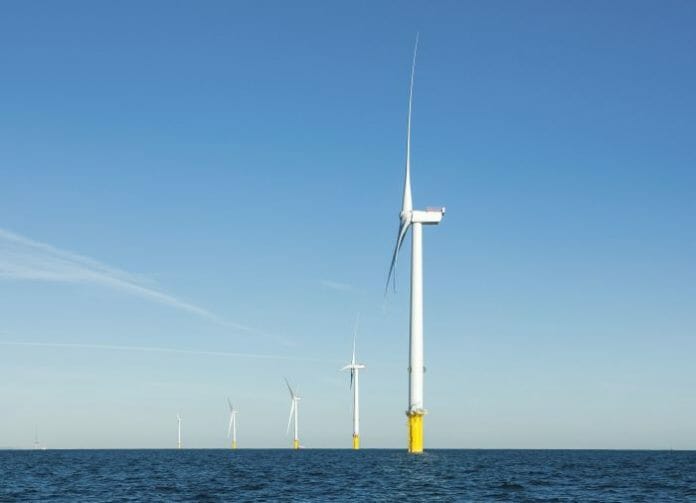The country’s largest power producer, Tenaga Nasional Berhad has an ambitious target of abandoning coal and fossil fuel from its list of materials used for power generation to greener sources, like wind, hydro and solar. With a target date set for 2050, TNB has 28 years to achieve its carbon net-zero goal without compromising the sustainable electricity supply to the Peninsular.
TNB has been overhauling its energy mix for decades from depending mostly on fossil fuels in the early ’70s to the 2000s, the group transitioned to gas and coal with the former dominating the usage today. The plan is to be less dependent on coal-powered plants and wean entirely off them by 2050.
In this regard, the push towards alternative sources has been deeply ingrained in the management team at TNB, the group recently launched its Sustainable Pathway 2050 agenda, a commitment that is aimed at achieving a net-zero emission aspiration. The “sustainable pathway” for TNB is one that future-proofs the company, a plan that spans more than 30 years with an end goal of achieving net-zero emissions by 2050.
Its core pathway also sees to the future-proofing of TNB’s business. This is crucial because the transition to a green economy must be balanced with financial sustainability and ensure that shareholder value continues to be well protected. This aspiration is underpinned by a commitment to reduce 35% of its emissions intensity as well as 50% of its coal generation capacity by 2035.
The electricity utility company had earlier committed to no longer investing in greenfield coal plants — the last being Jimah East Power, which was commissioned in 2019 — and aspires to be coal-free by 2050.
Through the Sustainability Pathway, TNB has also affirmed its commitment to the country’s renewable energy (RE) plan to increase the share of Malaysia’s RE capacity to 31% by 2025 and 40% by 2035.
TNB plans to move into greener energy sources, the plan is to not only build or invest in new RE assets locally but more significantly, to acquire assets overseas in solar, wind, and even hydrogen.
Why Overseas Assets?
There are multiple reasons for this venture, firstly Malaysia can get to know more about these new technologies which are widely being adopted in Europe, there is also the aspect of policies and carbon credits and their methods of implementation. BusinessToday spoke to some of the senior management team who cited the local competition for renewable energy with multiple players entering the market as one of the reasons for overseas expansion. This is also due to the Energy Commission’s opening up the industry participation for LSSP wich is further squeezing TNB stronghold as the main energy supplier in Peninsular. The overseas ventures are for its business to be sustainable and ensure the company meets shareholders’ obligations while being profitable in the future.
The group targets to double its RE capacity to 8,300 MW by 2025 from 3,400MW currently. Its current RE capacity in the international market is only 666MW. Its commitment by 2035 is achieving domestic capacity renewal & expansion will come from lower emission sources e.g. gas & renewable energy. International investments will increasingly focus on renewable energy & emerging green technologies. Aside from that, it will continue to invest in Grid of the Future & digitalization enabling Energy Transition.
As part of its commitment to achieving its goals in 2035, it plans to introduce new energy services that enable customers’ own Energy Transition journey e.g. rooftop + storage solutions.
Apart from that, TNB would Invest in R&D for emerging tech and greener alternative new energy sources e.g. low-carbon hydrogen, low-carbon services & adjacencies.
It would also deploy abatement levers to the thermal generation fleet e.g. carbon capture, utilization & storage, and plans are there to enable grid & distribution network to support increased demand from electrification and higher intermittency from increased RE penetration
TNB also looking into the European market for RE assets, as the industry is more mature there. For perspective, currently, coal is the main fuel used in TNB’s power generation, accounting for almost 50% of the fuel mix.
Meanwhile, through the newly launched Green Electricity Tariff (GET) programme, customers will receive mREC from grid-connected RE generators. There has also been an increase in the uptake of green energy generation among consumers, with TNBX issuing 621GWh of mREC to its customers to date.
On the global front, TNB’s international subsidiary Vantage RE Ltd recently acquired a 49% stake in Blyth Offshore Demonstrator Ltd, an offshore wind farm company in the UK, from EDF Renewables, with an installed capacity of 41.5MW and further development rights of up to 58.4MW.
This marks TNB’s first foray into offshore wind assets, and with a strong partner, it aims to build expertise in this technology and beyond. The focus of the international business will be to further grow the overall RE portfolio and serve as the pathfinder for green technologies that can eventually be adopted in Malaysia.
The foundation of managing sustainability at TNB is the integration of its sustainability pillars — namely governance, economic, environmental, and social — within its goal of becoming a leading global electric utility.
Its sustainability strategy is centred on TNB’s most material environmental, social, and governance (ESG) issues and contributions to the UN Sustainable Development Goals.
What we can sum from its forward looking vision is that the TNB we know and see today will be completely different come 2050, while we can be certain the group will continue to be a dominant energy player in the next 30 years the question will be on whether it can deliver its green energy promises?









